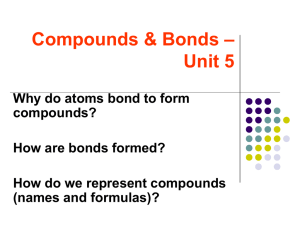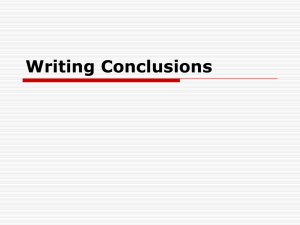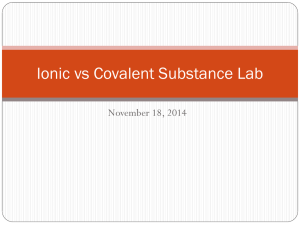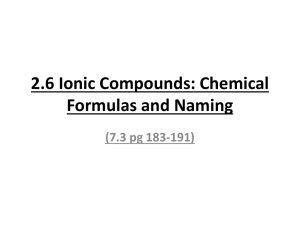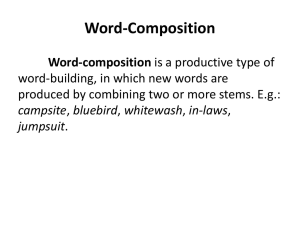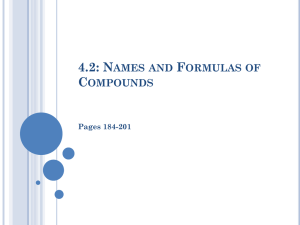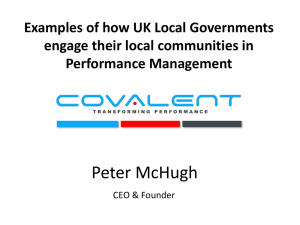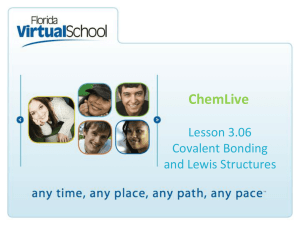Ionic and Covalent Compounds Bonding Lab
advertisement
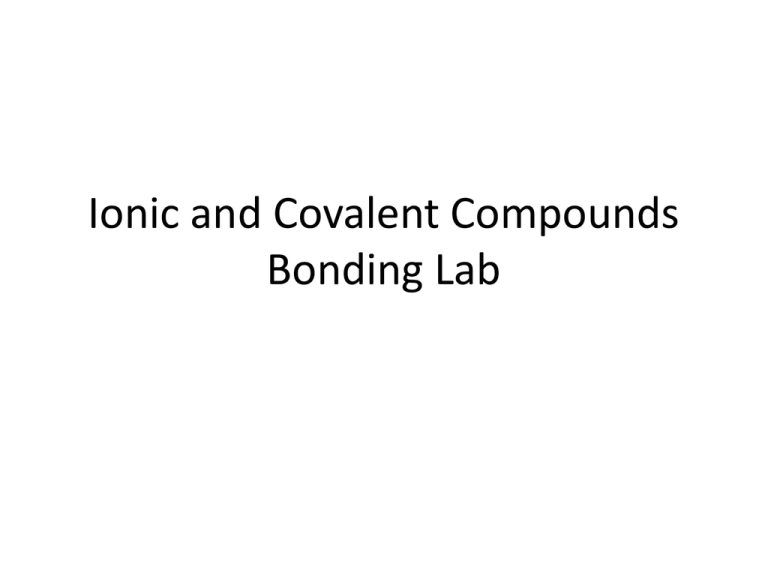
Ionic and Covalent Compounds Bonding Lab • Objective – Today I will be able to: • Explain the movement of electrons in metallic bonds • Analyze experimental data to differentiate between ionic and covalent compounds • Correctly name and write formulas for ionic and covalent compounds • Evaluation/ Assessment – Informal assessment – Listening to group interactions as they complete the ionic and covalent compounds lab and the naming compounds practice. – Formal Assessment – Analyzing student responses to the lab questions and the naming ionic and covalent compounds practice. • Common Core Connection – – – – – – Build Strong Content Knowledge Value Evidence Use appropriate tools strategically Attend to precision Reason abstractly and quantitatively Look for and express regularity in repeated reasoning • • • • Lesson Sequence Warm – Up Explain: Metallic Bonding Explain: Lab Safety Engage and Explore: Ionic and Covalent Compounds Lab • • Elaborate: Ionic and Covalent Compounds Lab Questions • • Formal assessment Elaborate: Ionic and Covalent Mixed Practice • • Formal assessment Elaborate: Naming Covalent Compounds Practice • • Informal assessment Formal assessment Evaluate: Exit Ticket • Formal assessment Warm - Up • Name the following covalent compounds: – NO2 – CBr4 – NCl3 – PF5 Objective • Today I will be able to: – Explain the movement of electrons in metallic bonds – Analyze experimental data to differentiate between ionic and covalent compounds – Correctly name and write formulas for ionic and covalent compounds Homework • Finish Naming Covalent Compounds Practice and Mixed Practice Worksheet • STEM Fair – Final Research Paper due Monday December 17 – In Class Presentations Wednesday January 23 Agenda • • • • • • • • Warm – Up Metallic Bonding Lab Safety Ionic and Covalent Compounds Lab Ionic and Covalent Compounds Lab Questions Naming Covalent Compounds Practice Ionic and Covalent Mixed Practice Exit Ticket Metallic Bonding Notes Metallic Bonds • Loosely bound valance electrons which are called mobile electrons because they are free to move around – delocalized • Allow the transition metals and rare earth metals to have multiple charges Electron Movement in Metallic Bonds Properties of Metallic Bonds • • • • Solids at room temperature (except Mercury) Ductile Malleable Good conductors Ionic and Covalent Compounds Lab Safety • Must wear goggles, aprons and closed toe shoes to participate • Instead of a bunsen burner, we will be melting the compounds on a hot plate, covered in Aluminum foil • Hot plates are HOT, do not touch even after you turn them off • Dispose of all solid compounds in the trash can and all liquids down the sink. Ionic and Covalent Compounds Lab • • • • Move into groups assigned by Ms. Ose Work through the lab If you have questions please ask! Do not forget to explain why in your conclusion statement. Listing the ionic and covalent compounds alone will not result in a good score on this lab • When you finish the lab, you may begin to work on the Naming Covalent Compounds Practice that you have on the back of the Ionic compounds practice. Naming Covalent Compounds Practice When you finish the lab complete the practice with the people around you. Ionic and Covalent Compounds Practice Complete the practice with the people around you. Whatever you do not finish in class will become homework. We will review next class. Exit Ticket • What are the properties that can be used to distinguish between ionic and covalent compounds in lab?


